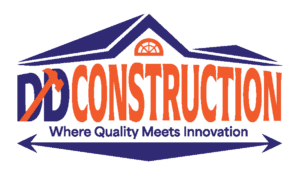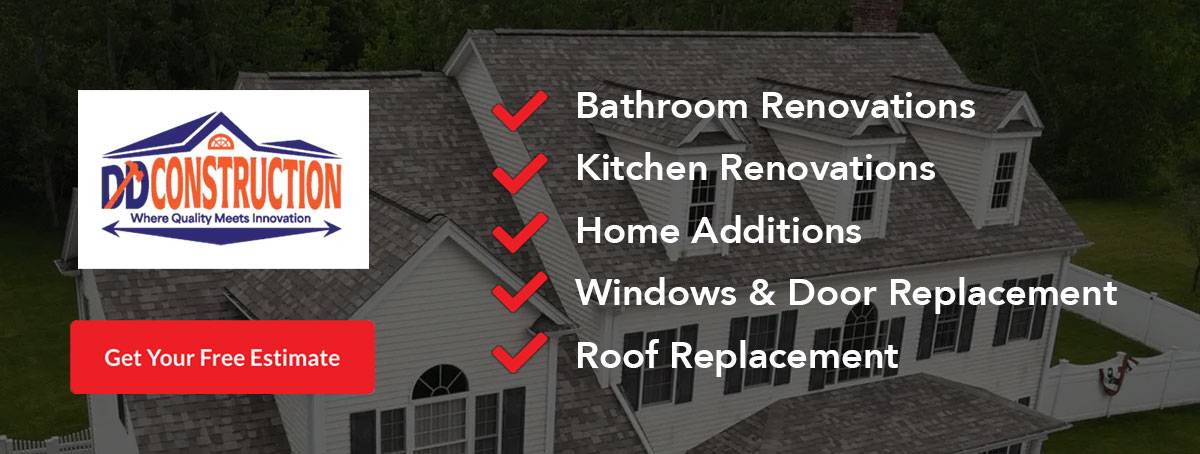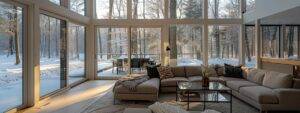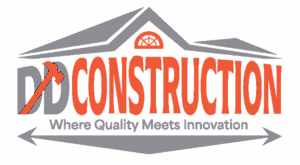Massachusetts Building Codes Every Roofing Contractor Follows: What You Need to Know
In Massachusetts, roofing contractors—often partnering with dd construction ma—must navigate a complex array of state and local building codes to ensure that every roofing project complies with stringent quality and safety standards. Homeowners and builders alike depend on these codes to guarantee durable construction, energy efficiency, and overall structural integrity. The process involves understanding which materials can be used, how installations are to be done, and what permits are required before work can begin. For roofing contractors working in Massachusetts—and those who collaborate with dd construction ma—keeping up to date with the latest code changes is not only a legal necessity but a mark of quality workmanship. This article provides an in-depth exploration of the various roofing requirements defined by Massachusetts building codes, offering guidance on approved materials, proper installation practices, and inspection processes. By addressing key aspects from state and local regulations to energy efficiency standards and permit application criteria, roofing professionals and homeowners can improve their understanding of what is expected for a quality roof. In the following sections, every part of the roofing process is analyzed by breaking down code sections, approved materials, installation practices, permit procedures, inspection expectations, energy efficiency mandates, and the impact of local municipal rules. This comprehensive guide aims to equip roofing contractors—and those looking for home improvement services in Massachusetts—with the knowledge they need to deliver superior craftsmanship and lasting improvements.
What Are the Key Massachusetts Roofing Codes Contractors Must Follow?
The Massachusetts roofing codes serve as the blueprint for ensuring that every roof built or modified meets high safety, durability, and energy efficiency standards. These codes are developed and enforced to safeguard residential and commercial structures, reducing risks associated with water penetration, insulation problems, and structural failures. The primary legal documents include both state amendments and adoptions of national standards like the International Residential Code (IRC). Contractors must be well-versed in these requirements to design roofs that offer a high standard of quality and safety.
Which State and Local Building Codes Govern Roofing in Massachusetts?
Massachusetts bases its building rules on a combination of state-level codes and local amendments. At the state level, the Massachusetts State Building Code, which incorporates the IRC and International Building Code (IBC) with specific modifications, provides the fundamental guidelines that every roofing project must follow. Local municipalities, such as Boston, Worcester, and Springfield, can impose additional requirements that reflect regional climate concerns or local construction traditions. These local codes ensure that roofing details such as flashing, insulation, and drainage systems are adapted to specific local environments. For instance, urban areas may have stricter requirements on fire-resistant materials due to higher population densities, while suburban and rural areas might emphasize energy efficiency measures. Contractors are required to check the precise local codes in addition to the state-level regulations to ensure compliance before beginning any project. Both state and local boards coordinate closely with the Massachusetts Board of Building Regulations and Standards to keep the codes current and reflective of technological advances and safety research.
How Do Massachusetts Amendments Affect the International Residential Code (IRC)?
Massachusetts makes specific amendments to the IRC to address regional climatic conditions, which include higher snowfall, extreme wind conditions, and coastal weather challenges. These amendments might regulate the pitch of roofs, the materials used in roof underlayment, and the methods for fastening roofing materials. For example, the code often requires additional reinforcement in areas that encounter heavy snowfall to prevent roof collapse. Contractors must integrate these amendments into their design and execution plans, ensuring that each component—from the trusses to the flashings and ventilations—is designed for optimal performance under local stress factors. The amendments often include clauses on moisture control and thermal insulation to foster energy efficiency, which in turn requires specific installation techniques to prevent condensation and frost damage. Being familiar with both national standards and state-specific modifications is crucial, as failure to comply can lead to permit rejections, costly reworks, and potential legal liabilities. Contractors who consistently update their knowledge about these changes demonstrate a commitment not only to compliance but to the craftsmanship quality that clients in Massachusetts expect.
What Are the Most Referenced Code Sections for Roofing Projects?
Among the myriad sections in the Massachusetts building code that impact roofing, a few are referenced more frequently due to their critical safety and performance implications. Sections dealing with structural loading, including wind and snow loads, are paramount, given Massachusetts’ variable weather. Other commonly referenced sections are those addressing the installation of roof coverings, underlayment materials, flashing detail, and the requirements for proper ventilation. Code sections on fire safety are also vital, especially in areas near densely populated structures or in regions with a high risk of wildfires. Furthermore, sections dedicated to energy efficiency mandate the use of reflective coatings and proper insulation to reduce energy consumption and impact the overall sustainability of the building. Contractors refer to these specific code sections routinely to validate that every component of the roof, from the decking to the finish, meets the prescribed performance criteria, ensuring a quality roof that can stand the test of time.
What Roofing Materials Are Approved Under Massachusetts Building Codes?
Roofing material approval in Massachusetts is closely regulated to ensure longevity, fire safety, and energy efficiency. Contractors and homeowners must choose materials that not only comply with state and local standards but also perform well under severe weather conditions. This section delves into the approved materials and the associated certification requirements, highlighting the balance between aesthetic appeal and functional durability. The building codes stipulate standards such as the Massachusetts Fire Code, which mandates certain materials be fire-rated especially in multi-family or commercial properties. Other approval factors include the material’s thermal insulation properties and its ability to minimize environmental impacts.
Which Roofing Materials Meet Massachusetts Fire and Safety Standards?
Only those roofing materials that achieve specific fire-resistance ratings can be used in designated zones in Massachusetts. Asphalt shingles, for instance, are typically required to have a Class A fire rating, thereby meeting the highest fire-resistance standards set by the code. Metal roofing systems and clay tiles are also popular choices since they inherently exhibit fire-resistant properties. The Massachusetts state code further requires that for high-risk areas, materials must pass rigorous testing and certification to prove their ability to mitigate the spread of fire. Contractors must source materials that are explicitly labeled with their fire-resistance rating and such products are often accompanied by technical data sheets and certification documents. Meeting these criteria is critical not only for safety but for insurance purposes, ensuring that the roof contributes to the overall fire safety of the structure.
How Do Code Requirements Differ for Asphalt Shingles, Metal, and Tile Roofs?
Different types of roofing materials have unique properties that the Massachusetts codes address with tailored installation and performance criteria. Asphalt shingles require specific underlayment materials and must be installed with proper fastening techniques to accommodate thermal expansion. In contrast, metal roofs, though intrinsically durable and fire-resistant, demand attention to condensation management and insulation to prevent moisture-related degradation. Tile roofs, whether clay or concrete, must adhere to guidelines regarding weight support and the structural reinforcement of the underlying framing system. Each material type has detailed requirements for installation angles, fasteners, and ventilation systems that ensure the roof remains functional under extreme weather conditions. Contractors must be adept at interpreting these requirements to provide a roof that not only appears attractive but also performs reliably. The precise conditions stipulated by the codes reflect the common challenges faced in Massachusetts—high winds, heavy snowfall, and rapid temperature fluctuations—which affect the durability and effectiveness of roofing systems differently based on their material composition.
What Are the Energy Efficiency Requirements for Roofing Materials?
Massachusetts places significant emphasis on using energy-efficient roofing materials as part of its broader commitment to sustainability and reduced energy consumption. Roofing materials must meet specific insulation and reflectivity standards to ensure buildings remain energy efficient. For example, cool roofs with high solar reflectance and thermal emittance are encouraged to help reduce cooling costs during the hot summer months. Roof insulation and vapor barriers are also strictly regulated to prevent energy loss and moisture intrusion. Materials must have certifications that attest to their R-value (a measure of thermal resistance) and be installed in accordance with guidelines that promote a balanced thermal envelope. These energy efficiency requirements are incorporated into the building codes to promote both environmental responsibility and economic benefits for homeowners. As energy-efficient roofing directly influences a building’s sustainability ratings, contractors who prioritize these materials help reduce the overall carbon footprint and enhance the property’s appeal in a market that increasingly values environmental stewardship.
How Do Massachusetts Building Codes Regulate Roofing Installation Practices?
The installation of a roofing system must adhere to detailed procedures specified by Massachusetts building codes to safeguard both the structure and inhabitants. Proper installation practices ensure that the roof can withstand severe weather, support its intended lifespan, and meet energy efficiency and fire safety guidelines. Contractors must follow systematic methodologies that dictate not only material placement but also the integration of elements such as flashing, ventilation, and drainage. The installation process is dictated by a blend of manufacturer recommendations, industry best practices, and specific code mandates. This section unveils the detailed installation practices that must be observed, providing practical insights into methods that enhance durability and compliance. From proper underlayment to the correct method of fastener installation, every step plays a pivotal role in delivering a roof built to code and built to last.
What Are the Code-Compliant Installation Methods for Roof Shingles?
Code-compliant installation of roof shingles involves detailed attention to preparation, application, and finishing touches. The first step is proper roof deck preparation, which includes ensuring the decking is free of defects and adequately supported. Underlayment materials must be installed over the decking as a moisture barrier, followed by the systematic application of shingles according to the manufacturer’s instructions and local code requirements. The shingles must be aligned correctly and fastened securely with nails driven at specific intervals to withstand high wind speeds. Additionally, incorporating proper overlapping techniques ensures that water infiltration is minimized and that the roof performs efficiently under varying load conditions. Roofing contractors must often use supplemental methods, such as adhesive strips or sealants, in areas prone to moisture accumulation. Regular quality inspections during installation help verify adherence to both the code and to best practices, ensuring that every portion of the roof contributes to the structure’s integrity and longevity.
How Is Proper Roof Ventilation Defined by Massachusetts Codes?
Proper roof ventilation is a critical component in maintaining a healthy roofing system and ensuring energy efficiency. Massachusetts building codes define ventilation requirements to prevent heat buildup, reduce moisture levels, and prolong the life of the roof materials. Adequate ventilation is achieved by balancing the intake of fresh air at the roof’s eaves with the expulsion of hot air through ridge vents or other exhaust systems. The codes specify a minimum net free vent area based on the size of the attic space, ensuring that both static and dynamic pressure differences are maintained to achieve optimal airflow. This ventilation not only helps in regulating the internal temperature of the building but also safeguards the roof deck from moisture accumulation that could lead to mold growth or structural deterioration. Contractors must carefully design the ventilation system as part of the overall roofing installation, using high-quality components and ensuring that air passage points are unobstructed. This detailed approach to ventilation is essential in Massachusetts, where temperature extremes and high humidity levels can significantly affect the longevity and performance of a roofing system.
What Are the Drainage and Gutter Requirements Under Massachusetts Codes?
Ensuring proper drainage is one of the most critical aspects of a roofing installation. Massachusetts building codes have clear guidelines for the installation and maintenance of gutters and downspouts to prevent water penetration and structural damage. Roof drainage systems must be designed to handle significant precipitation loads, with gutters sized appropriately based on the roof area and expected rainfall intensity. Downspouts should be located to direct water away from the building’s foundation and must be fixed securely to avoid detachment during high winds. Flat roofs and complex architectural designs require specialized drainage solutions that prevent water pooling, which could lead to leaks or accelerated roof deterioration. Contractors must verify that all drainage components conform to local fire and safety standards and that installation methods prevent clogging through the use of screens or guards. These drainage requirements are designed not only to protect the individual roof but also to contribute to the overall longevity and structural stability of the building. By following these guidelines, roofing companies ensure that water is efficiently channeled away, reducing the risk of long-term damage and costly repairs.
When and How Are Building Permits Required for Roofing Projects in Massachusetts?
Obtaining the appropriate building permits is a fundamental step in any roofing project in Massachusetts. Permits serve as formal approval from local municipalities that the planned work complies with all applicable building codes and safety standards. For both new installations and major repairs or modifications, securing a permit is legally required. Homeowners and contractors must closely review project-specific requirements to determine when a permit is necessary and understand the application process. The permit system is designed to protect the safety of residents by ensuring that all roofing work is executed professionally and that the finished project meets strict compliance guidelines. This section outlines the key moments during a roofing project when permits are required, along with a step-by-step guide to the application process and a review of common approval criteria. Establishing a strong understanding of permit requirements not only facilitates a smoother project flow but also minimizes the risk of fines or delays due to non-compliance.
What Types of Roofing Projects Require Permits in Massachusetts?
In Massachusetts, most roofing projects—whether they involve a complete roof replacement or significant repairs—require building permits. Projects that modify the existing structure, such as increasing the slope or changing the roofing material from one type to another, generally necessitate a permit. Additionally, any roofing work that impacts the building’s energy performance or fire safety features must be permitted. Even when only minor repairs are planned, such as reroofing with the same materials and design, local building departments may still require an inspection and formal approval. The permitting process ensures that all modifications adhere to current codes, safeguarding the building’s integrity and the surrounding community. Contractors must be diligent in identifying the scope of their projects and consulting with local planning offices to confirm whether a permit is required. This thorough approach helps prevent issues later in the project that could arise from non-compliance, such as legal challenges or unforeseen repair costs.
How Do You Apply for a Roofing Permit in Massachusetts?
Applying for a roofing permit in Massachusetts involves submitting detailed plans and documentation to the local building department. Contractors and homeowners must compile records that typically include project specifications, material certifications, and detailed schematics showing roof elevations, drainage systems, and ventilation provisions. The application process is often conducted online or in person and may require an initial review fee. Once submitted, the project plans are reviewed by building inspectors who verify that all aspects of the project meet both state and local standards. Depending on the project’s complexity, additional documentation or clarification might be requested before approval is granted. The timeline for approval can vary by municipality, but it is generally expected to take several days to several weeks. Contractors with experience in Massachusetts permits often leverage their familiarity with local requirements to expedite the process. Ensuring that every detail—from flashings to insulation—is clearly documented and meets current codes is essential for a successful permit application.
What Are the Common Permit Approval Criteria and Timelines?
Permit approval in Massachusetts hinges on a thorough review of the proposed roofing project to ensure full compliance with the building codes. Common criteria include the structural integrity of the roof design, compliance with fire-resistance standards, rated performance of the roofing materials, and effective drainage and ventilation solutions. Inspectors will scrutinize the drawings, material specifications, and installation plans to ensure that best practices are followed. Timelines for permit approval typically range from one to several weeks, depending on the complexity of the project and the workload of the local building department. High-demand periods or projects that require additional reviews due to unique design elements may experience longer processing times. Contractors who provide detailed and accurate plans, along with any necessary supporting documents, are more likely to receive a prompt approval. Maintaining a clear line of communication with permit officials throughout the process can further help to alleviate any potential delays and ensure that the project proceeds on schedule.
What Should Homeowners Expect During Roofing Inspections in Massachusetts?
Roofing inspections in Massachusetts are critical checkpoints that verify the quality and compliance of roofing projects. These inspections are conducted by certified building inspectors who evaluate every element of the roof installation—from the structural integrity of the decking to the proper installation of flashings and ventilation components. Homeowners and contractors should be aware that inspections are not merely procedural formalities; they are designed to catch failings before they become hazardous or lead to extensive repair work. Understanding what inspectors check for and the potential consequences of failing an inspection is essential for ensuring a successful completion of the roofing project. This section explains the role of roofing inspections, detailing the common checklist used by inspectors as well as the aftermath of an inspection failure. Homeowners will find that being prepared for these inspections can significantly streamline the process and ensure that the roof is not only aesthetically pleasing but also built to last.
Who Conducts Roofing Inspections and What Do They Check?
Roofing inspections are typically conducted by state-certified building inspectors or third-party professionals specially trained to evaluate roofing systems. These inspectors use comprehensive checklists that assess all critical components of the roof. Items on the checklist include verifying that the roof deck is structurally sound, that appropriate underlayment and waterproofing materials have been installed, and that flashings around chimneys and valleys are correctly applied. Inspectors also evaluate the integrity of the shingle installation, the adequacy of fasteners, proper alignment of the roofing material, and that drainage systems are correctly installed. In addition, inspections often include assessments of ventilation systems, ensuring that the roof meets energy efficiency and moisture control standards. The thorough nature of these inspections helps to identify potential issues—such as loose shingles, inadequate sealing, or improper flashing—that could compromise the roof’s performance over time. Correcting these issues well before the roof is fully commissioned can prevent leaks, water damage, and costly repairs in the future.
How Do Inspections Ensure Compliance With Massachusetts Building Codes?
Roofing inspections are designed to ensure that every aspect of the roofing project complies with Massachusetts building codes. Inspectors rely on detailed checklists based on state and local regulations, verifying that the materials and methods used in the project meet the specified standards. Compliance checks cover everything from fire resistance and structural integrity to ventilation and energy efficiency features. Inspections can occur at multiple stages of the roofing process, including after the completion of the underlayment installation, after the shingle placement, and during the final inspection stage before the roof is accepted. Non-compliance issues are documented, and contractors are provided with a report detailing any deficiencies that need to be addressed. When corrections are made, subsequent inspections confirm that the improvements meet the required standards. Ensuring compliance reduces the risk of accidents, minimizes long-term maintenance costs, and assures homeowners of the roof’s durability. It also protects contractors from potential penalties and legal liabilities, reinforcing the importance of thorough and professional performance at each stage of the project.
What Are the Consequences of Failing a Roofing Inspection?
Failing a roofing inspection in Massachusetts can lead to a variety of serious consequences for homeowners and contractors alike. If a roof does not meet the minimum code requirements, the project cannot be certified, and work must be halted until the deficiencies are corrected. This failure can cause significant delays in project completion and may lead to increased costs due to the need for re-inspection and remediation work. In some cases, repeated inspection failures can affect a contractor’s license or lead to fines. Moreover, a roofing system that has not passed inspection is more likely to suffer from problems such as leaks, structural weakness, or poor energy performance, putting residents’ safety at risk. For homeowners, this means potential future repair expenses and reduced property value. For contractors, it undermines their reputation and can lead to legal disputes if non-compliant work causes damage or injury. Therefore, ensuring each step of the installation complies with professional standards is essential to avoid these negative outcomes.
How Do Massachusetts Roofing Codes Address Energy Efficiency and Sustainability?
Massachusetts building codes place increasing emphasis on energy efficiency and sustainability in roofing design. By targeting energy consumption reduction and promoting sustainable materials, the codes contribute to both environmental stewardship and cost savings for homeowners. Energy-efficient roofing can significantly reduce heating and cooling expenses while also playing a crucial role in minimizing the building’s carbon footprint. Contractors must choose materials and install systems that support high levels of thermal insulation, reflective properties, and effective ventilation. These requirements not only meet the immediate demands of energy conservation but also ensure that the roof performs optimally throughout its lifespan. Contractors utilizing sustainable practices and advanced materials are recognized under Massachusetts codes, which encourage environmentally friendly construction practices.
What Are the Massachusetts Energy Code Requirements for Roofs?
The energy code requirements for roofs in Massachusetts are designed to optimize the thermal performance of buildings. These codes mandate that roofing materials achieve specific performance metrics such as a minimum R-value for insulation and a high solar reflectance index for cool roofing systems. The use of reflective coatings and barriers that reduce heat absorption is highly encouraged, particularly on roofs exposed to high solar radiation. Additionally, the codes require a proper balance of ventilation to ensure that excess heat is effectively expelled, thereby reducing the need for artificial cooling. These requirements are especially stringent for commercial structures and multi-family residential buildings, where energy performance is closely monitored. Contractors must provide documentation that the selected materials meet these performance specifications, ensuring that the installed roof contributes to the building’s overall energy efficiency and sustainability goals. Verification through third-party testing or certification often supports compliance in these cases.
Which Roofing Materials and Designs Support Energy Efficiency Compliance?
Several roofing materials and designs support compliance with energy efficiency mandates in Massachusetts. Cool roofs with light-colored surfaces are favored because they reflect more sunlight, reducing the absorption of heat. Metal roofs, when coated with reflective or insulated layers, offer both durability and high energy performance. Additionally, green roofs, which incorporate vegetation, not only provide natural insulation but also reduce the urban heat island effect. Incorporating high-quality insulation beneath the roofing materials further enhances the building’s thermal envelope. Specialized roofing systems that integrate solar panels or photovoltaic shingles are also becoming more popular as they couple energy generation with energy efficiency. These innovative approaches allow roofs to contribute significantly to a building’s overall energy strategy by lowering utility costs and reducing greenhouse gas emissions. By adhering to these design principles and material specifications, contractors can maximize the environmental and economical benefits of a modern roofing system, ensuring compliance with stringent Massachusetts energy codes.
How Are Climate Change Considerations Reflected in Recent Code Updates?
Recent updates to Massachusetts building codes reflect a growing acknowledgment of climate change and its impact on building performance. These updates have led to higher standards for energy conservation, improved insulation, and more efficient ventilation systems designed to cope with warmer temperatures and more frequent extreme weather events. There is also an increased focus on sustainable and renewable roofing materials that reduce long-term environmental impacts. Contractors are now required to consider not only current weather conditions but future climate projections when selecting materials and designing roofs. The incorporation of higher solar reflectance values and enhanced insulation requirements reflects an industry-wide shift towards facilitating resilient, sustainable construction practices that can withstand changing climatic conditions. As a result, roofing systems built under these updated codes are better equipped to handle increased thermal stress and severe weather, contributing to a more sustainable built environment in Massachusetts.
How Do Local Municipalities in Massachusetts Affect Roofing Code Compliance?
Local municipalities in Massachusetts may impose additional roofing code requirements on top of the state-mandated standards. These local rules often reflect the unique environmental conditions and historical architecture of the area. For example, urban centers like Boston or historic towns might enforce stricter guidelines regarding roofing materials, color palettes, or installation methods. Local ordinances can also affect permit processes and inspection timelines, making it imperative for contractors and homeowners to verify local regulations in addition to state codes. Understanding these localized requirements helps ensure that roofing projects not only comply with broader state regulations but also align with community aesthetics and safety expectations. This section examines how local municipalities influence roofing code compliance and what steps contractors and homeowners can take to access and comply with these additional rules.
Which Cities Have Additional Roofing Code Requirements Beyond State Codes?
Several cities and towns across Massachusetts have adopted supplemental roofing standards that address their unique regional needs. Urban areas such as Boston and Cambridge may have additional fire safety and aesthetic regulations to protect dense populations and preserve historic architecture. In contrast, cities like Worcester or Springfield might focus on more rigorous energy efficiency and insulation requirements to cope with colder winters. Coastal municipalities are often required to use materials that can withstand high winds and salt corrosion. Each jurisdiction publishes its own building codes, and local building departments are responsible for enforcing these additional requirements. Contractors must consult these local regulations before beginning a project to ensure that the chosen materials and installation techniques are fully compliant with both state and municipal standards. This dual-level compliance is essential to avoid delays, fines, or even forced removal of non-compliant roofing materials.
How Can Contractors and Homeowners Access Local Code Information?
Accessing local code information in Massachusetts is straightforward when approached through the appropriate municipal channels. Many cities and towns provide online portals where building codes, permit requirements, and inspection guidelines are available for public review. Contractors can also attend local building department meetings or consult with municipal code enforcement officers to clarify specific requirements. Homeowners interested in understanding the roofing codes for their area may visit their local town or city hall where printed copies of building codes are typically available. Professional organizations and trade associations in the construction industry also offer resources and training modules that cover state and local code differences. By utilizing these resources, contractors and homeowners can ensure that they have the most current and detailed information needed to comply with all applicable regulations. Staying informed is a critical aspect of maintaining high-quality workmanship and ensuring a smooth and approved roofing project.
What Are Examples of Local Code Differences in Boston, Worcester, and Springfield?
Examples of local code differences can vary significantly across Massachusetts. In Boston, for instance, roofing projects may face stricter aesthetic guidelines, particularly when renovating historic buildings, with predetermined color palettes and material types that blend with the historic architecture. Worcester might emphasize enhanced energy efficiency measures due to local climate variations, demanding higher insulation standards and more robust ventilation systems compared to the state baseline. Springfield, meanwhile, might focus on improved drainage systems and additional reinforcement for roofing structures in flood-prone areas. Each municipality tailors its codes to address specific environmental challenges and community needs. Contractors working in these cities must adapt their approaches to meet these localized standards, ensuring that every element from material selection to installation techniques aligns with both state and local expectations. Awareness and adherence to these city-specific requirements are fundamental in achieving code compliance and delivering a high-quality, durable roof.
Frequently Asked Questions
Q: What are the benefits of using energy-efficient roofing materials in Massachusetts? A: Energy-efficient roofing materials help homeowners reduce utility costs by enhancing thermal insulation and reflective capabilities. These materials meet state energy codes and contribute to environmental sustainability by lowering overall energy consumption. Additionally, energy-efficient roofs can increase property value and improve the building’s resilience to extreme weather conditions.
Q: How do I know if my roofing project requires a permit in Massachusetts? A: Most major roofing projects, including complete roof replacements, extensive repairs, or changes in roofing material, require a permit. Minor repairs may not need one, but it is essential to consult with your local building department. Reviewing both state and local codes or consulting with a licensed contractor will help determine if your project qualifies for a permit.
Q: What are some common reasons for roofing inspection failures in Massachusetts? A: Common reasons include improper installation of underlayment, insufficient fastening of shingles, inadequate flashing, poor ventilation, and non-compliance with drainage requirements. Failing to meet fire-resistance standards or using materials that do not have proper certifications can also result in inspection failures. Correcting these issues promptly is crucial to moving forward with the project.
Q: Can local municipalities impose additional requirements beyond the state roofing codes? A: Yes, local municipalities, such as Boston, Worcester, or Springfield, often have additional building code requirements that address local environmental conditions, historical preservation, and energy efficiency. Contractors must review local regulations in conjunction with state codes to ensure full compliance with all applicable requirements during a roofing project.
Q: What steps should I take if my roof fails an inspection? A: If your roof fails an inspection, the inspector will issue a detailed report outlining the deficiencies. You should prompt corrective action, such as re-installing or reinforcing components that are non-compliant. Once repairs are completed, schedule a re-inspection to verify that the roof now meets all required standards. This process ensures your roof is safe, durable, and code-compliant.
Q: How do Massachusetts building codes contribute to sustainability in roofing? A: Massachusetts building codes mandate the use of energy-efficient and sustainable roofing materials that reduce energy consumption and minimize environmental impact. Codes require the installation of proper insulation, reflective coatings, and effective ventilation systems. These measures not only lower utility costs but also enhance the overall durability and performance of the roofing system, contributing to a reduced carbon footprint.
Q: What role does proper roof ventilation play according to Massachusetts codes? A: Proper roof ventilation regulates the attic temperature, reduces moisture buildup, and prevents premature aging of roof materials. Massachusetts codes require balanced air intake and exhaust systems to ensure effective ventilation. This prevents problems like mold growth and condensation damage while also significantly contributing to the energy efficiency and lifespan of the roofing system.
End of Article





